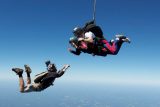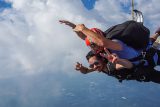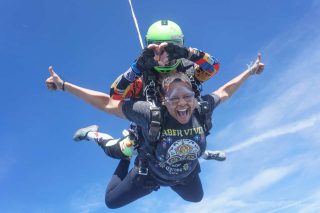What is Tandem Skydiving and How Does it Work?
Tandem Skydiving
4 years ago
Tandem Skydiving 101
With any new territory comes a landscape of fresh terminology and a healthy smattering of well-intentioned bravado. Let’s face it. No one likes looking like a newbie, but this is precisely where everyone starts out when exploring a new pastime. You may be wondering, what is tandem skydiving. We’ll break it down for you.
Some first time skydivers are under the impression their first jump will be a quick briefing and a solo leap, but this just isn’t the case. All neophytes are required to complete at least one tandem skydive first.
We’re big believers that it’s totally okay that you don’t know what you don’t know. That’s why we are here! So, let’s get you up to speed. This is what you need to know about tandem skydiving and how it works.
What is Tandem Skydiving?
Sure, for birds, maybe abruptly being kicked out of the nest works, but birds are feathered things complete with wings and an evolutionary leg up on the competition. Human flyers need a more gentle introduction.
Tandem skydiving operates off the principle that two is better than one, especially when you’re jumping out of a plane and most definitely when one of the two is a skydiving professional.
Don’t fret. The thrill won’t be diminished any with a partner in crime. Rather, it’s enhanced by having someone to show you the ropes.
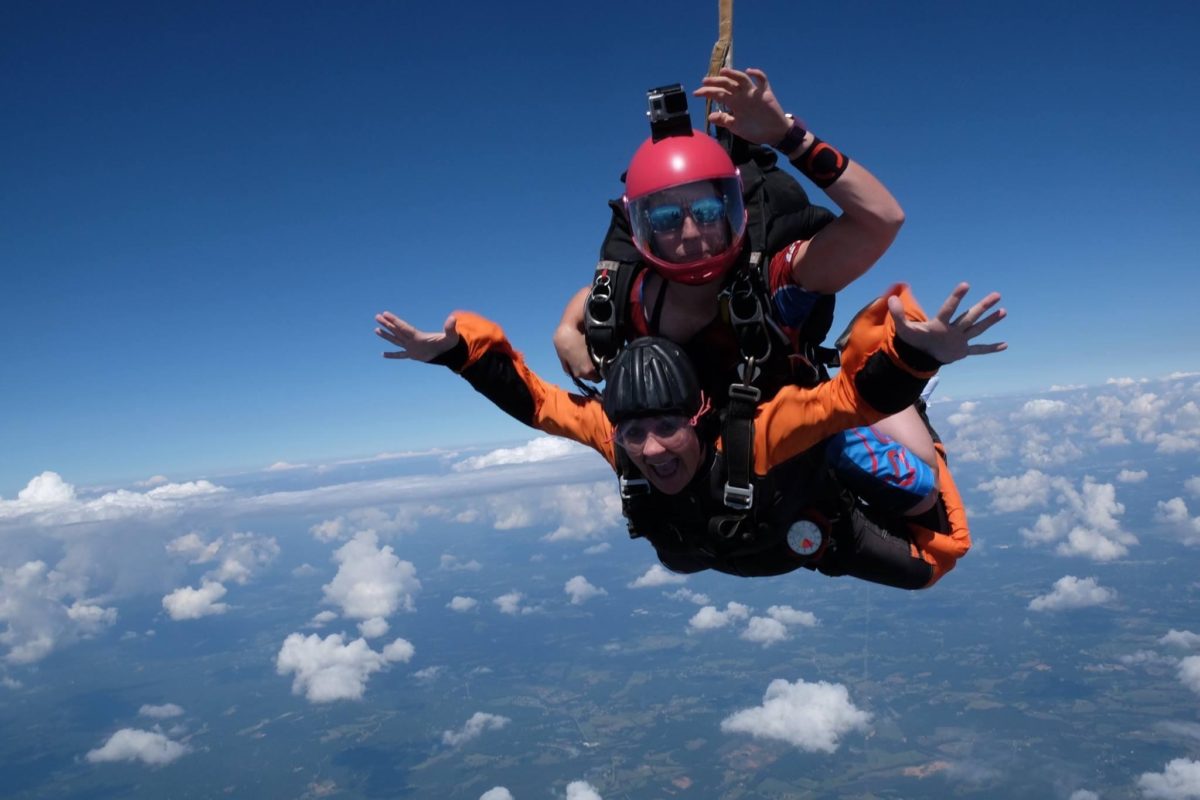
How Does Tandem Skydiving Work?
On a tandem skydive, you are securely attached via a harness to the front of your skydiving instructor for the entirety of the skydive and subsequent parachute flight. The harness has adjustable leg straps and an adjustable chest strap so that a snug, but not tight, fit can be achieved. On a tandem skydive, the instructor wears a “backpack” which is the parachute container. The student harness connects at four spots to the instructor’s parachute harness: one at each shoulder and one at each leg.
Tandem Skydiving Equipment
The parachute container that the instructor has contains not one, but two parachutes: a main parachute and a reserve parachute. The main and reserve parachutes used for tandem skydiving are much larger than typical skydiving parachutes because each must be able to bear the weight of two people. That being said, when it is made, a parachute is issued a Technical Standard Order (TSO) by the Federal Aviation Administration. This TSO indicates the weight load that a particular parachute can bear. For nearly all skydiving gear, this is 500lbs. However, keep in mind, this weight would include the instructor, the student, and the weight of the gear itself. It is for this reason, we maintain a tandem student weight limit of 225lbs.
What about tandem instructors?
Tandem Instructors Are Stone Cold Pros
You can’t just jump with anyone. As fun as it may be to imagine being strapped to your partner or best friend, it simply cannot happen. And, it certainly doesn’t happen overnight.
To even consider being a tandem instructor an individual must be a licensed skydiver with three years of experience. Every instructor candidate must have accrued 500 jumps and possess the most advanced skydiving license offered by the USPA, a D License. Every instructor goes through a United States Parachute Association tandem instructor course with an instructor examiner and receives an equipment specific certification. Before beginning the course, and at certain intervals throughout their skydiving career as an instructor, the individual must also present a Class III Flight Medical.
Ooh-wee As you can see, it’s a rigorous matter to become a qualified tandem instructor.
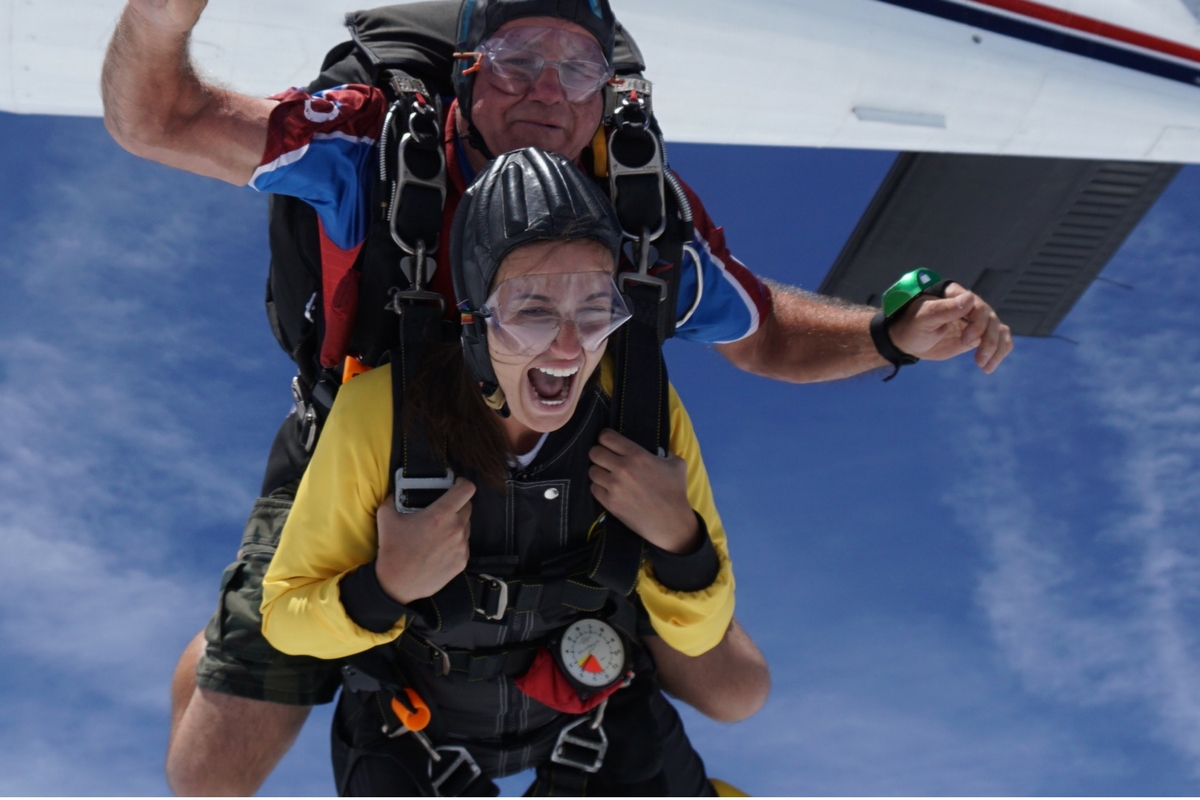
Let Us Be Your Guide
At Skydive Carolina, our instructors are well equipped and ready. We would love to take you on a tour of the skies, or as we like to call it: our office!

